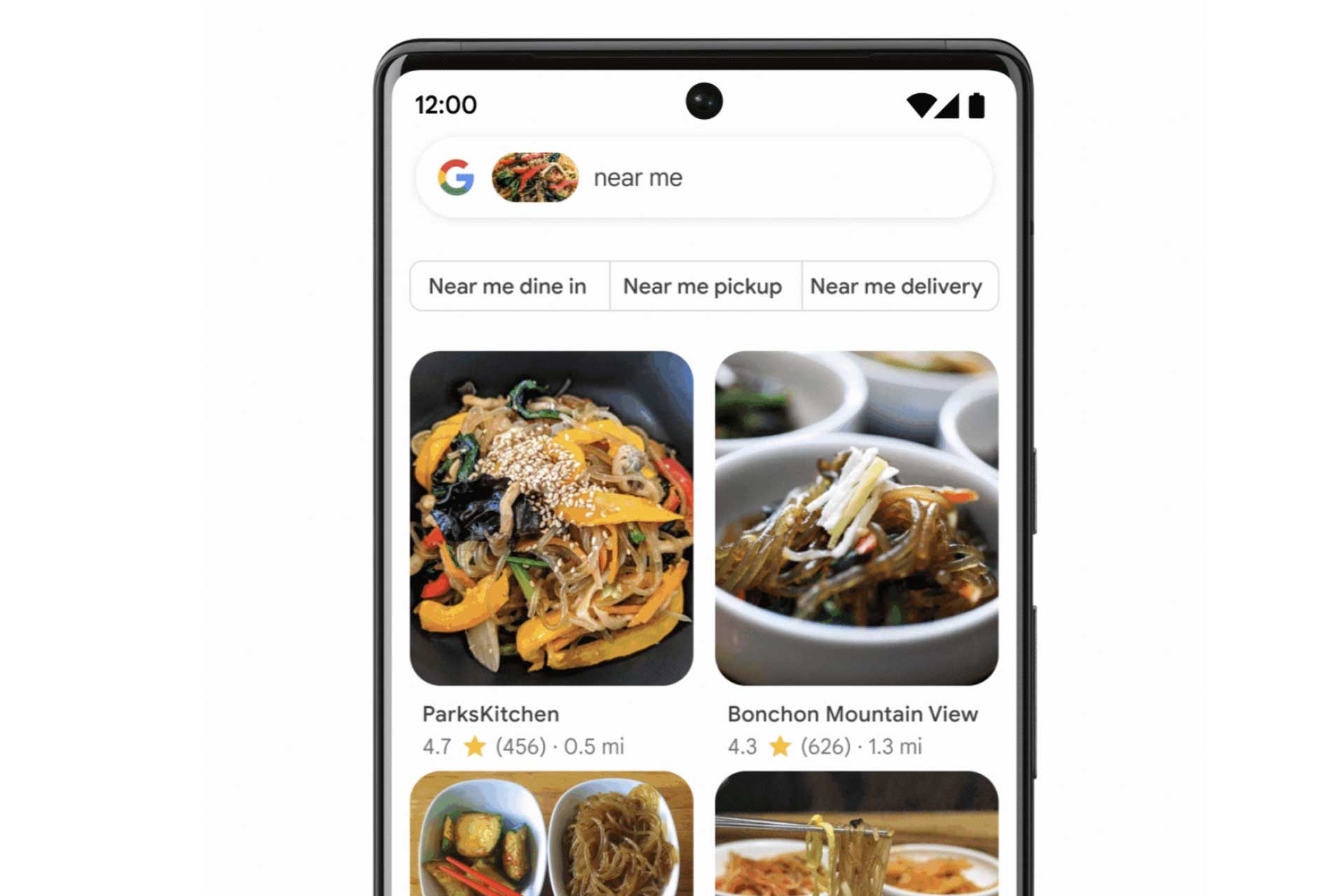This is a comprehensive read, as it covers every aspect of an effective local SEO strategy. Check the sections to discover in-depth guides that explain each tactic in detail.
There’s never been a more crucial time to have an online presence as a local business.

Sources: BrightLocal. Statista
Your prospective customers will check Google first. You must ensure they find you there, or risk losing them to competitors.
In this guide, we will cover everything you need to know to create a winning local SEO strategy—one that pulls in customers online and helps you compete with larger businesses in your area.
Table of Contents
Local SEO Ranking Factors to Consider
Gone are the days when online citations and business listings were enough to get you to the top of local search results.
Below are the factors that currently impact Google’s search results rankings for local businesses. They were listed in order of importance, according to a survey of local SEO experts.

Source: BrightLocal
An effective local SEO strategy combines all of these factors and optimizes for each of them.
Another thing that impacts search rankings is Google’s constantly changing landscape. The search engine occasionally receives tweaks that affect which local businesses rank highly and which don’t.
For instance, Google has added several new local search features since 2022, e.g., the Multisearch near me, which allows people to find local businesses through image search.

The Multisearch Near Me feature was rolled out in April 2022.
There was also the “Vicinity” update of December 2021, which changed how the algorithm evaluates local map pack results.
The message is clear: to remain relevant, you should stay informed of Google’s local search updates. By staying in the loop, you can react to changes quickly and adapt your strategy as needed.
That said, this guide takes into account Google’s latest local updates up until March 2023, as well as the crucial local ranking factors.
How to Build a Winning Local SEO Strategy
Create and optimize your Google Business Profile
The Google Business Profile is crucial to local SEO since it is how you position your business on the Google Map Pack. The Map Pack is where most people go when searching for a local service/business.

Only the map pack, only the top 3 are immediately visible in the search results.
Creating a Google Business Profile is easy. First, you’ll have to set up your profile with a Google account. It’s recommended that you create a separate Google account for your business instead of using your personal email.

Google may have already made a listing for your business, in which case you will have to request ownership access.
Then you’ll follow a simple process where you’ll
- Enter your business type and category
- Enter your address (if you are a local store or have a physical location)
- Or service areas (if you go to your customers, like a handyman/contractor)
- Fill in your contact details and website.
- And verify your profile.
Once your profile is verified, your business should appear in the map pack within a couple of days. However, appearing at the top of the pack just for creating a GBP is rare. That requires optimizing your profile. Here are some ways to do that:
Prioritize Google’s local ranking factors
Google determines which businesses rank in the top three map pack results based on three factors:
- Prominence: measures how popular your business is to customers. It is affected by online and offline factors such as online reviews and real-world popularity. You can influence it by getting more reviews, citations, and news features.
- Relevance: measures how useful your business is to a user’s search query. Google will decide you’re relevant to specific search queries if you use matching or related keywords throughout your website and online profiles.
- Proximity: Google will try to show businesses that are closest to a searcher’s particular location. This factor is harder to influence than the others. However, you can theoretically affect it by building online profiles/web pages with relevant keywords targeted to the location you’re trying to rank for. You should actually be close to these locations (at least a 2-hour drive). Doing otherwise is against Google’s guidelines.
Give Google all the information it needs
When setting up your profile, ensure that you provide Google with everything it asks for, including your opening hours, business category, pictures, and every service/product you offer.
The more local information Google has about your business, the higher you’re likely to rank on the map pack.
When filling in information like your business category, you should be quite specific. So say you prune and trim trees, it makes more sense to choose “arborist and tree surgeon” as a category instead of simply “tree service,” as the former is more specific.

You can also add other categories that fit later.
Only use up-to-date and accurate information across all platforms
This seems like a no-brainer but it’s easy to take for granted. Your opening hours on your GBP must match your real-world opening hours. The same goes for your name, address, and phone number (NAP).
Google takes these things seriously, so much so that it might go as far as asking customers who have visited your business to help verify your location and a few details.
What’s more, if your business information (NAP) appears in any other parts of the web (these are called citations), they must match what’s on your GBP. This consistency is important as it affects Google’s evaluation of your geographical relevance.
Prioritize Reviews
Getting a lot of positive reviews can signal to Google that your business is trustworthy.
These reviews don’t all have to be on your GBP. Getting positive reviews on third-party platforms like Yelp and Facebook also counts.
Responding to reviews, whether positive or negative, is another important aspect. Google highly values this and has even mentioned that it can “improve business visibility,” so it makes sense to assume that it can improve your rankings.

Source: Google
You want to respond to reviews quickly, as slow responses are not a good signal.
Negative reviews don’t necessarily spell doom in terms of rankings. Google’s Senior Search Analyst, John Mueller, explained in 2020 that having a bunch of random negative reviews is common and shouldn’t really affect rankings.
This doesn’t mean you shouldn’t address negative reviews. Matter-of-fact, you should do so swiftly and decisively. Here are a few tips from Google on how to engage negative reviews.
We go more in-depth into how to improve your listing in our Google Business Profile Optimization guide. There we’ll cover things like obsolete practices to avoid, Google posts, and best practices for storefronts, service-area businesses, and appointment-based businesses.
Here, we will continue to cover the other crucial aspects of a successful local SEO strategy, all of which can impact your Google listing
Identify and rank for the right local keywords
To appear in search results, your business listings and website pages need to have terms that match what people are searching for. These terms are called keywords.
As a local business, your keywords must represent the terms people in your area actually use to find services like yours. For example, if you sell athletic shoes in the United States, you should use the word “sneakers” as opposed to “trainers,” which is common in the United Kingdom.
To rank for the right keywords, you need to first discover what these keywords are. Then you have to strategically place them throughout your web content, pages, listings, and online profiles.
You can use keyword research tools like Ahrefs, Semrush, and Ubersuggest to discover what relevant keywords people in your area are using. These tools will also let you know which keywords are very difficult or otherwise relatively easy to rank for.We’ll recommend powerful SEO tools like Ahrefs and Semrush, but Ubersuggest is quite easier to wrap your head around if you’re a beginner, so it’s a good place to start.
For a local keyword strategy that generates results, you should do the following:
Compile a list of relevant local keywords
Think about words people might naturally use if they were to search for your business or any of your services.
For example, if you were an arborist or tree service, such words might include:- Tree removal
- Tree trimming service
- Tree surgeon
- Tree specialist
- Tree disease treatment
We call these niche keywords.
Next, add location terms people use to find nearby services. These are often; “near me,” “nearby,” and “local.”
You also want to include the names of locations in your area since these are where your customers are searching from.
If you live in South Milwaukee, you might list names like:- West Allis
- New Berlin
- Greenfield
- Muskego
These and phrases like “near me” are location modifiers.
Once you have your niche keywords and location modifiers, you can input them in the keyword research tool.
Find local keywords using the keyword research tool
When you input one of your niche keywords in the keyword research tool, it will bring up multiple related terms that people actually search for. You will find that some of these terms include the location modifier “near me,” e.g., “tree removal service near me.”

Doing keyword research using Ubersuggest. Tools like this will also show you the volume of searches for each search term/keyword monthly.
The search volume lets you know how competitive a keyword is. A keyword with a monthly search volume of 50,000 searches will be quite competitive since it’s popular. A search volume of 500—not so much.
Depending on what tool you use, you will be able to search by city or town. This is recommended as it helps you identify which keywords are popular in your area. Some keywords that help you search by city include Google Keyword Planner, Ubersuggest, and KWfinder by Mangools.
Some users include specific location modifiers in their searches, e.g. “tree removal west allis,” so you want to check for variations like this as well in the search tool.
Once the tool has brought up relevant results, you can now choose which of these keywords to include in your keyword strategy.
Conduct competitor keyword research
Your local keyword research is not complete if you don’t know what keywords your competitors are showing up in search results for.
Since you are in the same niche, some of those keywords will be relevant to your business. You want to rank higher than your competitors for those KWs and get more traffic.
Some tools, like Ahrefs, Keyword Planner, and Ubersuggest, can find competitors’ keywords. You just have to input your competitor’s domain into the tool, and it will show a list of keywords they are ranking for organically.

You can select which of these KWs make sense for you based on their search volume and how they fit your products/services.
When you have a list of KWs you want to rank for, you can use them to optimize your website and online listings.
There are a few more things to consider, including dealing with competitive keywords and doing keyword research for multiple locations. We go more in-depth in this comprehensive guide to local keyword research.
Optimize your website
Your website is vital to your local SEO efforts, and not just because it serves as your digital storefront.
The webpage you link to your GBP listing can significantly impact your ranking in the map pack. This is a theory that is believed and has been proven by SEO experts.
For instance, the SEO agency Sterling Sky boosted the Google listings of their lawyer clients by linking relevant landing pages.
What part of your website you should link to your GBP might be up for debate, but the homepage is generally recommended because it usually has the most authority and relevance.
Lest we forget, an optimized website wouldn’t only influence your Google listing positively. It still serves the classic purpose of ranking highly in local organic search results and pulling in leads.As a local business, you need to optimize your website for local SEO if you want to see results. This typically includes the following steps:
Perform a website audit
A website audit checks your existing website to identify any basic or technical SEO issues. Without a strong SEO foundation, the site would likely do poorly, so an audit is usually the first step.
There is a simple way to perform a basic website audit. Some of the aforementioned tools, such as Ahrefs and Ubersuggest, can analyze your website and provide a comprehensive report of what needs to be fixed.
All you’ll have to do is type in your website’s URL.
But if you want to be thorough, you can hire a local SEO agency to do the audit for you. They can help you identify or fix any technical faults or even handle your entire local SEO strategy.
Some typical SEO issues you may find include:- Missing page titles
- Missing meta descriptions
- Slow site speed
- Non-indexed pages
- Thin content
- Poor backlink profile
- Poor mobile-friendliness
- Duplicate content
- Broken links
Improve on-page SEO
On-page SEO involves tweaking elements of your web pages so they can rank higher in search engine results pages (SERPs).
If you’ve done a website audit, it will also highlight on-page SEO practices you need to implement, which could include any of the following:
- Create and optimize content: Create content that describes your business and markets your product/services. Then make sure to include the local keywords you’ve selected strategically and naturally. The content must also be useful to your target audience.
- Optimize title and meta-description: The title tag and meta description are the body of text that are displayed when a webpage shows up in the search results. They should contain the local keywords you want your webpage to rank for.
- Use internal links: Internal links are links from one page of your website to another. They are usually included in the content and can help users and search engines discover more of your webpages. Include them strategically throughout your site to make it rank better and drive users toward conversions.
- Check and fix URLs: Your website shouldn’t have any broken links (links that don’t lead to a page). The audit tool will identify these links, so you should either correct or delete them. If you’re creating new pages, the URLs should be brief and contain the target keyword of that page.
Create a local link-building strategy
Backlinks are links to your site from other sites. They are crucial if you want your site to rank in the top SERPs. Why? One good reason is that Google seriously prioritizes them.
Google generally sees sites with a good number of high-quality backlinks as authoritative. It then rewards them with a higher position in the search results.
With link-building in general, the focus is to get a lot of backlinks from high-quality sites. “High-quality” sites are reputable, trustworthy, and relevant to your site’s subject matter.
Local link building has a similar purpose but requires somewhat different tactics.
A successful local link-building strategy would include the following:
- Get mentioned in local newspapers or news sites.
- Get listed in local business directories
- Get mentioned in local review and travel websites.
- Reach out to local businesses in your area and have them link to you.
- Reach out to local influencers and bloggers.
- Offer to guest post content on other popular websites in your industry.
- Create high-quality content that others can link to.
Tip: When reaching out for backlinks, you can sometimes try to get your contact to mention your business location as well. So instead of “drywall service,” they would say “drywall service in West Allis.” If done strategically, this can improve the geographical relevance of your business to search engines.Build a local content marketing strategy
Most of the webpages/articles ranking high in the SERPs are a product of content marketing.
A content marketing strategy entails creating in-depth, informative articles that answer the search queries of your target audience. For these articles to rank, they must:
- Be useful and relevant to the search queries.
- Contain keywords that match or are related to the search queries.
- Be in-depth, resourceful, and well-written enough to make other sites link to them.
With a content marketing strategy, you aim to:- Attract leads: people interested in your content can be nurtured to purchase your services.
- Attract backlinks: other sites might link to your article because they find it useful, which in turn can make it rank higher.
- Increase brand awareness: with the right content, you can get more shares and have people talking about your business.
A local content strategy basically follows the same principle. The only difference is that you focus on creating content that’s relevant to your area.
So for example, if you were a restaurant in Milwaukee, Wisconsin, you would write on topics like “X best things to eat in Milwaukee” or “How to prepare (a popular local dish).”
A few tips for effective local content marketing:
- Define your local audience and cover topics that address their pain points (which are relevant to your business). You can discover such topics through keyword research and local communities.
- Hop on local trends and make the most of them with informative and buzz-worthy content.
- Use different content formats. Use pictures and videos in your articles (especially of landmarks and local activities relevant to the topic; if possible and when given permission). Apart from articles, you can publish success stories and surveys to build your voice as a local authority.
- Keep track of your content’s performance through website analytic tools like Google Analytics and Google Search Console.
Use local business schema
Schema markup is a type of code that helps search engines better understand the content on your website. This improves how they display this content in search results.
For example, schema was added to this webpage about a recipe:

As a result, Google displayed key information about the recipe users might want to know i.e, the ingredients, cooking time, picture of the meal, and the ratings.
With local business schema, the code (or structured data markup, as it’s more accurately called) helps search engines process relevant business details on your website. This includes your opening hours, type of organization, address, company description, etc.
Depending on your business, there are several details you can optimize using schema markup. Google’s guide explains what kind of schema you can add and how to add it.
Adding local business schema makes your website more relevant to local search results, which can help boost your rankings on the SERPs.
Build your presence in online directories
Apart from Google, there are online directories where you can submit your business details and get customer reviews. Some of the most popular ones include Yelp, Yellow Pages, Yahoo, and Angie’s List

People check reputable directories for local businesses, so they are a great way to be discovered.
The popular local directories can give you an advantage in the SERPs. Some of them rank highly for local search queries. If your business is listed in them, that means you can be found via search even if your website is not ranking highly.
Another benefit of local directories is that they can act as backlinks, especially if they are reputable sites
Increase your local citations
Local citations are any online mentions of your business information, especially your name, address, and phone number (NAP).
These are usually included in business directories like Google or Yelp and on other websites.
Depending on the site, they might also include images, directions, your company website, and other features.
Apart from being crucial to your business’s online visibility, citations also have an impact on search rankings. The more mentions your business has, the more certain Google is of your business information. This increases trustworthiness, which improves your chances in the SERPs.
When building citations, you should focus on directories and sites that are relevant to your local niche and geographical area. This is good for SEO, and it also lets more people in your area see your business.
As always, it is crucial to ensure consistent accuracy of information across every platform your business information appears.
You can build your citations manually, use local data aggregators, or use citation-building services
Getting Results From Your Local SEO Strategy
Local SEO is now more competitive than it used to be. There are several factors that will affect how long it takes to see results e.g. population of your local area, industry competitiveness, budget, etc.
The most important thing is to get the basics right, which includes technical SEO, apart from everything already mentioned in this guide.
With a strong foundation, you will be much closer to outranking your competitors and pulling leads that convert to customers.




